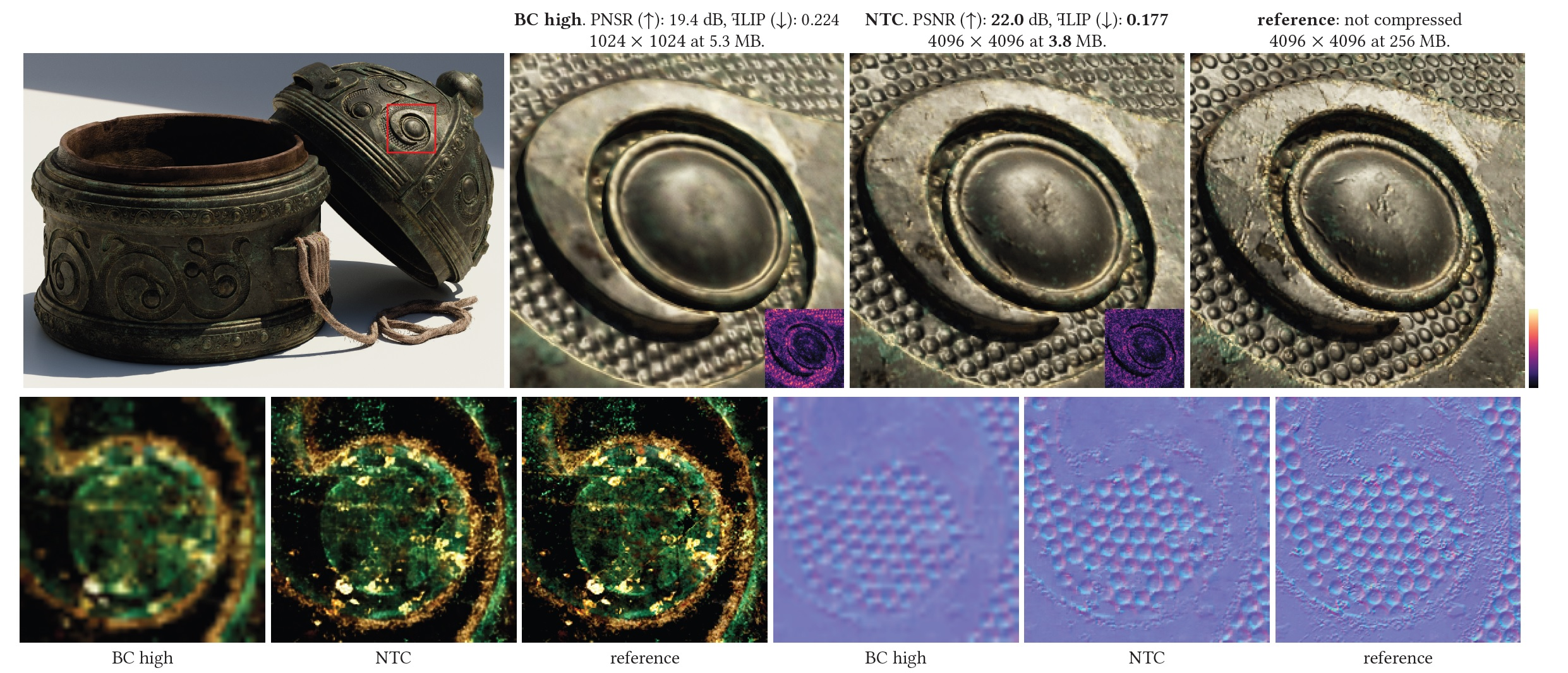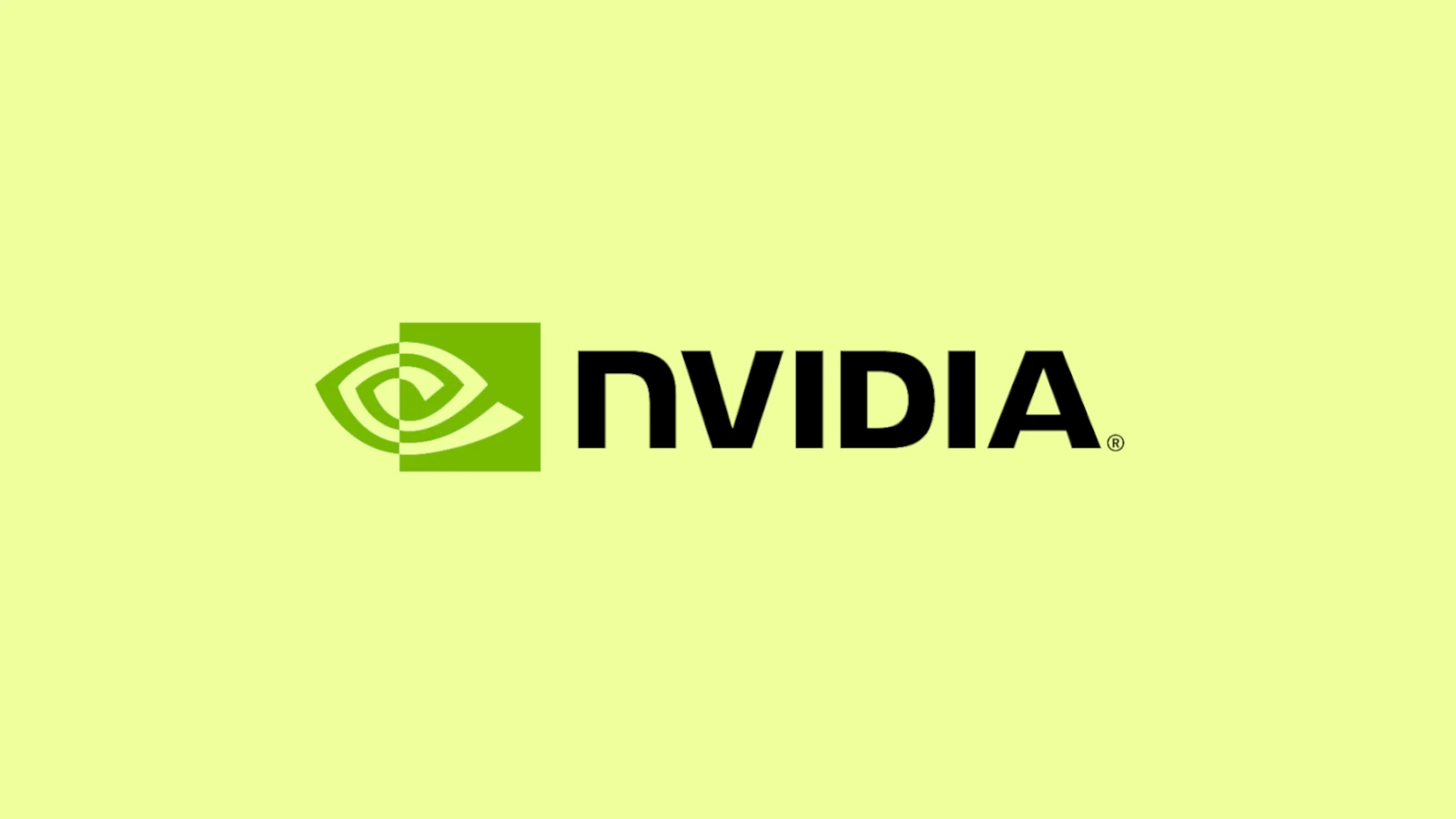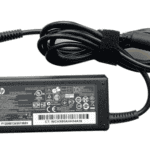NVIDIA’s latest breakthrough in texture compression technology marks a significant advancement in GPU memory management. The new Neural Texture Compression (NTC) technique reduces VRAM usage by up to 96% while maintaining visual quality.
The technology leverages neural networks to compress multiple material textures and their mipmap chains together. This innovative approach enables real-time decompression with random access, similar to traditional block texture compression on GPUs.
Early tests on the RTX 4090 at 1440p and 4K resolutions show remarkable preservation of texture detail despite the dramatic reduction in file size. The technology could revolutionize how games handle high-resolution textures and memory management.

Revolutionizing Graphics with AI-Powered Texture Compression
Understanding RTX Neural Texture Compression
NVIDIA’s RTX Neural Texture Compression (NTC) is a new technology that uses artificial intelligence to compress textures. This compression significantly reduces the amount of Video RAM (VRAM) needed to store and use these textures. The result? Potentially up to a 96% reduction in VRAM usage, as demonstrated in NVIDIA’s beta demos. This breakthrough could change how games are made and how they perform.
How NTC Works
NTC uses a neural network, a type of AI, to analyze textures. The network learns how to represent the texture data in a much smaller, more efficient way. This compressed version of the texture can then be decompressed in real-time as needed by the graphics card. This means that games can use textures with higher resolution or more detail, without needing massive amounts of VRAM.
Benefits of NTC
The primary benefit of NTC is the significant reduction in VRAM usage. This has several positive implications:
- Improved Performance: Games that were previously limited by VRAM can now run smoother, with higher frame rates.
- Enhanced Visuals: Developers can use higher resolution textures, leading to more detailed and immersive game worlds.
- Increased Accessibility: Gamers with less powerful graphics cards can experience higher quality visuals without needing to upgrade.
NTC vs. Traditional Texture Compression
Traditional texture compression methods have limitations. They often involve trade-offs between compression ratio and image quality. NTC, powered by AI, can achieve much higher compression ratios while maintaining, and in some cases, even improving image quality.
| Feature | NTC | Traditional Compression |
|---|---|---|
| Compression | Up to 96% reduction in VRAM | Lower compression ratios |
| Image Quality | Maintained or improved | Potential quality loss |
| VRAM Usage | Significantly lower | Higher |
| Technology | AI-powered neural network | Algorithm-based |
| Future Potential | Greater potential for improvement | Limited further gains |
The Future of NTC
NTC is still in its early stages. While the initial results are promising, several factors will determine its widespread adoption:
- Developer Integration: Game developers need to integrate NTC into their game development pipelines. NVIDIA will likely provide tools and support to make this process easier.
- Performance Optimization: The real-time decompression of NTC textures requires processing power. Continued optimization will be crucial to minimize any performance overhead.
- Hardware Support: While NTC is associated with RTX GPUs, it’s unclear if it will require specific hardware features. More details about hardware requirements are needed.
If these challenges can be addressed, NTC has the potential to become a standard for texture compression in games. It could also have applications in other fields that use large textures, such as virtual reality, augmented reality, and even professional graphics software.
Beyond Gaming: Other Applications of AI Texture Manipulation
The technology behind NTC, using AI to manipulate textures, has potential applications beyond just gaming. Think about the vast amount of image data used in fields like architecture, design, and even scientific visualization. AI could be used to:
- Enhance Image Resolution: AI can be used to upscale images, making them larger and more detailed, without introducing artifacts. This could be useful for everything from restoring old photographs to improving the quality of satellite imagery.
- Generate Textures: AI can create entirely new textures from scratch, which could be used in games, movies, and other visual media. This could save artists a lot of time and effort.
- Edit Textures: AI can be used to automatically edit textures, such as removing unwanted elements or changing the color scheme. This could be useful for tasks like retouching photographs or creating variations of a texture.
These are just a few examples of how AI can be used to manipulate textures. As AI technology continues to advance, we can expect to see even more innovative applications in the future. The ability to efficiently manage and manipulate texture data is crucial for many industries, and AI offers a powerful set of tools to address these challenges. Just as NTC promises to revolutionize gaming graphics, similar AI-driven techniques could transform workflows and unlock new creative possibilities in a wide range of fields.
Key Takeaways
- Neural Texture Compression reduces VRAM usage by 96% without compromising visual quality
- The technology enables instant decompression and seamless texture loading during gameplay
- This advancement could eliminate memory constraints in future gaming applications
Innovations in GPU Technology
NVIDIA’s latest technological breakthroughs mark significant advances in texture compression and AI processing capabilities, revolutionizing the graphics industry with remarkable efficiency gains.
Advancements in AI Applications
Project Digits, NVIDIA’s new AI supercomputer, integrates the complete NVIDIA AI stack on the GB110 chip architecture.
The system pairs with a MediaTek co-developed CPU, enabling cloud-based supercomputing access through DGX Cloud.
Tensor Cores in modern GPUs now process AI workloads faster, supporting advanced features like DLSS 4’s Multi Frame Generation for RTX 50 Series cards.
NVIDIA’s Texture Compression (NTC) Technique
The revolutionary NTC system reduces VRAM usage by up to 96% while maintaining visual quality.
This technique replaces traditional Block Truncation Coding with AI-powered compression using Tensor Cores.
Key benefits of NTC:
- Drastically reduced memory requirements
- Faster texture loading times
- Minimal impact on visual fidelity
- Real-time compression capabilities
Impact on Gaming and Graphics
The new compression technology enables games to include higher resolution textures while using less memory.
Developers can now create more detailed virtual environments without worrying about VRAM limitations.
RTX games and applications benefit from these improvements through:
- Enhanced visual quality
- Better performance
- Reduced loading times
- More efficient resource utilization
The technology shows particular promise for VR applications where memory bandwidth is critical.
Strategic Partnerships and Market Impact
NVIDIA’s partnerships and market strategies have transformed the semiconductor landscape, with their technology innovations reaching far beyond gaming into AI, cloud computing, and data centers. Their collaborations directly influence the advancement of AI technologies and computing capabilities.
Collaboration with Tech Giants
NVIDIA’s market value has surged past $3 trillion through strategic alliances with major tech companies. The company’s partnerships with Microsoft and Google have accelerated AI development across multiple platforms.
Their collaboration with TSMC ensures cutting-edge manufacturing processes for their chips, maintaining competitive advantages in performance and efficiency. These partnerships enable NVIDIA to optimize their Transformer Engine and NVLink technologies for enterprise applications.
The GitHub integration allows developers to access NVIDIA’s AI tools directly, streamlining development workflows and expanding their ecosystem reach.
Role in Data Centers and Cloud Services
NVIDIA dominates the data center market through partnerships with leading cloud service providers. Their hardware powers AI operations in AWS, Microsoft Azure, and Google Cloud platforms.
The Blackwell architecture serves as the foundation for next-generation data centers, offering enhanced processing capabilities for AI workloads. Cloud providers utilize NVIDIA’s semiconductor solutions to deliver faster, more efficient services to their customers.
Key features:
- Processing Power: Up to 8x faster AI training
- Energy Efficiency: 25% reduction in power consumption
- Scalability: Supports thousands of concurrent users
Future Directions and Moore’s Law
Jensen Huang, NVIDIA’s CEO, challenges traditional Moore’s Law limitations through innovative chip designs and AI acceleration techniques. The company develops new architectures that maximize performance beyond traditional scaling methods.
NVIDIA’s research focuses on:
- Advanced chip packaging
- Multi-die solutions
- AI-optimized circuits
Their semiconductor roadmap includes plans for integrated AI cores in all major product lines. This strategy positions NVIDIA to maintain market leadership as computing demands continue to grow.







